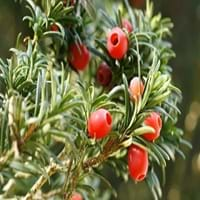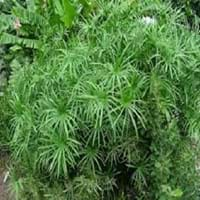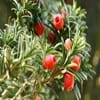Life Span
Perennial
Perennial
Type
Needled or Scaled Evergreen
Needled or Scaled Evergreen
Origin
Eastern Asia
Japan
Types
Not Available
Not Available
Habitat
Dappled Shade, Shady Edge, Woodland Garden Secondary, Woodlands
ditches, Marshy ground
USDA Hardiness Zone
4-7
5-8
Sunset Zone
A2, A3, 2a, 2b, 3a, 3b, 4, 5, 14, 15, 16, 17
4, 5, 6, 7, 8, 9, 14, 15, 16, 17, 18, 19, 20, 21, 22, 23, 24
Habit
Upright/Erect
Pyramidal
Flower Color
Non Flowering Plant
Yellow
Flower Color Modifier
Bicolor
Bicolor
Fruit Color
Red
Red orange
Leaf Color in Spring
Dark Green
Green
Leaf Color in Summer
Dark Green
Dark Green
Leaf Color in Fall
Dark Green
Dark Green
Leaf Color in Winter
Dark Green, Bronze
Dark Green, Bronze
Leaf Shape
Pinnate
Umbrella Like
Plant Season
Spring, Summer, Fall, Winter
Spring, Summer, Fall, Winter
Sunlight
Full Sun, Partial Sun, Partial shade, Full Shade
Full Sun, Partial Sun
Type of Soil
Loam
Clay, Loam
The pH of Soil
Acidic, Neutral, Alkaline
Acidic, Neutral
Soil Drainage
Well drained
Well drained
Bloom Time
Fall, Spring, Summer, Winter
Summer
Tolerances
Drought
Drought
Where to Plant?
Ground
Container, Pot
How to Plant?
Stem Cutting, stem tip cuttings, Tip cutting
Rooted stem cutting
Plant Maintenance
Medium
Medium
Watering Requirements
Average Water Needs, Do Not over Water, Do not water frequently
Plant grows in water
In Summer
Lots of watering
Lots of watering
In Spring
Moderate
Moderate
In Winter
Average Water
Average Water
Soil pH
Acidic, Neutral, Alkaline
Acidic, Neutral
Soil Type
Loam
Clay, Loam
Soil Drainage Capacity
Well drained
Well drained
Sun Exposure
Full Sun, Partial Sun, Partial shade, Full Shade
Full Sun, Partial Sun
Pruning
Remove damaged leaves, Remove dead branches, Remove dead leaves
Cut out old leaves
Fertilizers
All-Purpose Liquid Fertilizer
All-Purpose Liquid Fertilizer
Pests and Diseases
Red blotch
Fungal Diseases
Plant Tolerance
Drought
Drought
Flower Petal Number
Single
Single
Foliage Texture
Fine
Fine
Foliage Sheen
Not Available
Not Available
Attracts
Aphids, Mealybugs, White Pine Weevil
Hummingbirds
Allergy
Pollen
Not Available
Aesthetic Uses
Bonsai, Borders
Not Available
Beauty Benefits
Not Available
Not Available
Environmental Uses
Air purification
Air purification
Medicinal Uses
anti-cancer
Tonic
Part of Plant Used
Fruits, Wood
Root
Other Uses
Used as a dye, Wood is used for making furniture
Basketary, Used in paper industry, Weaving into Mats and Bags
Used As Indoor Plant
No
No
Used As Outdoor Plant
Yes
Yes
Garden Design
Feature Plant, Foundation, Groundcover, Hedges, Screening, Wind Break, Topiary, Bonsai, Espalier
Feature Plant, Foundation, Mixed Border, Topiary, Bonsai, Espalier
Botanical Name
TAXUS cuspidata
Cyperus alternifolius
Common Name
spreading yew
Galingale,Umbrella Palm
In Hindi
Japanese Yew
mbrella Palm
In German
japanische Eibe
Cyperus alternifolius
In French
Japanese Yew
Cyperus alternifolius
In Spanish
tejo japonés
Cyperus alternifolius
In Greek
Ιαπωνικά Yew
Umbrella Palm
In Portuguese
Xapanese Filho
Umbrella Palm
In Polish
Xapanese Son
Cibora zmienna
In Latin
Filius Xapanese
Umbrella Palm
Phylum
Tracheophyta
Magnoliophyta
Class
Pinopsida
Liliopsida
Family
Taxaceae
Sciadopityaceae
Clade
Not Available
Angiosperms, Commelinids, Monocots
Tribe
Not Available
Not Available
Subfamily
Not Available
Not Available
Number of Species
Not Available
Not Available
Importance of Japanese Yew and Umbrella Palm
Want to have the most appropriate plant for your garden? You might want to know the importance of Japanese Yew and Umbrella Palm. Basically, these two plants vary in many aspects. Compare Japanese Yew and Umbrella Palm as they differ in many characteristics such as their life, care, benefits, facts, etc. Every gardener must at least have the slightest clue about the plants he wants to plant in his garden. Compare their benefits, which differ in many ways like facts and uses. The medicinal use of Japanese Yew is anti-cancer whereas of Umbrella Palm is Tonic. Japanese Yew has beauty benefits as follows: Not Available while Umbrella Palm has beauty benefits as follows: Not Available.
Compare Facts of Japanese Yew vs Umbrella Palm
How to choose the best garden plant for your garden depending upon its facts? Here garden plant comparison will help you to solve this query. Compare the facts of Japanese Yew vs Umbrella Palm and know which one to choose. As garden plants have benefits and other uses, allergy is also a major drawback of plants for some people. Allergic reactions of Japanese Yew are Pollen whereas of Umbrella Palm have Not Available respectively. Having a fruit bearing plant in your garden can be a plus point of your garden. Japanese Yew has showy fruits and Umbrella Palm has showy fruits. Also Japanese Yew is not flowering and Umbrella Palm is not flowering . You can compare Japanese Yew and Umbrella Palm facts and facts of other plants too.





